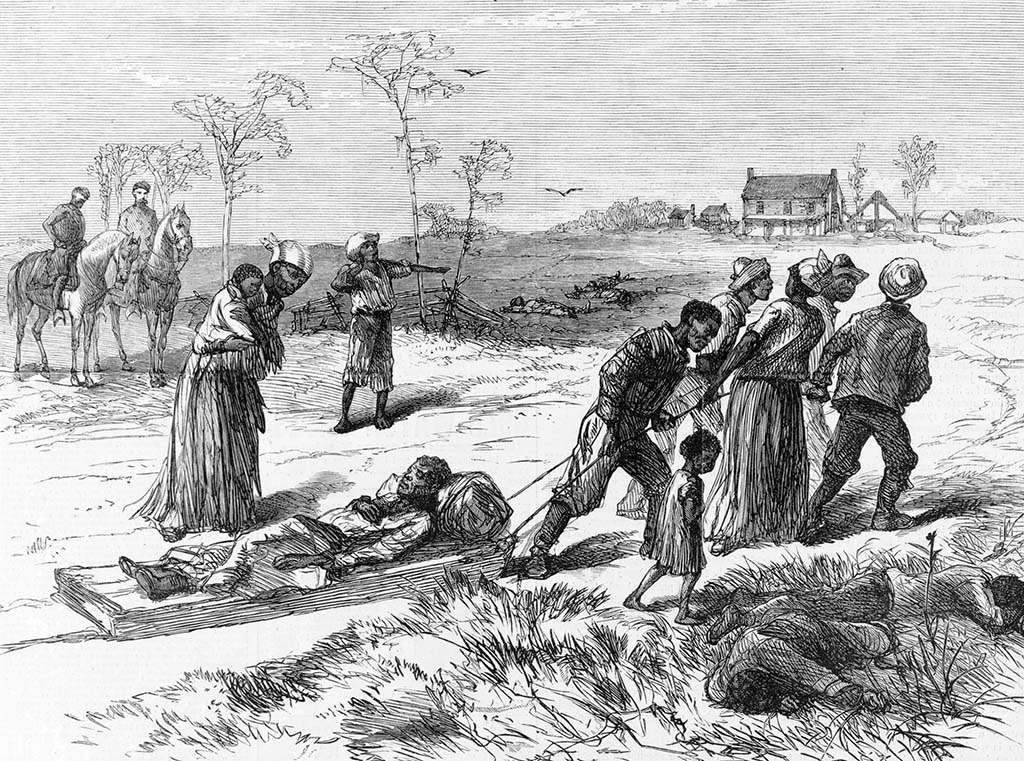The Colfax Massacre
“The bloodiest single instance of racial carnage in the Reconstruction era, the Colfax massacre taught many lessons, including the lengths to which some opponents of Reconstruction would go to regain their accustomed authority,” historian Eric Foner writes in Reconstruction: America's Unfinished Revolution, 1863-1877.
The Colfax Massacre took place on Easter Sunday of 1873 in the county seat of Grant Parish, Louisiana, triggered by a highly contested 1872 gubernatorial election mirroring the larger conflict in the Reconstruction Era South. The two opposing parties – the Radical Republicans, who represented the newly freedpeople in their campaign for African American civil rights and citizenship; and the southern Democrats, who represented the white southerners in their campaign for white supremacy – each claimed victory in the election. The Colfax courthouse became the symbol for this division as about 150 white men, comprised of former Confederate soldiers and members of the Ku Klux Klan and the White League from throughout Louisiana, converged at the courthouse in an attempt to prevent the Radical Republican candidate from taking office, and in response, local freedmen took siege inside the courthouse. Despite the freedmen’s surrender, the white supremacists set fire to the courthouse: an undetermined number of freedmen were burned alive, and those who tried to escape were killed. In total, an estimated 150 African American men died in the Colfax Massacre.
Attempts to prosecute the white supremacists under the Ku Klux Klan Acts (Enforcement Acts of 1870 and 1871), intended to protect the rights of African Americans under the 14th and 15th Amendments, were ultimately unsuccessful. The case eventually made its way to the Supreme Court: United States v. Cruikshank (1875) overturned the lower courts’ convictions, ruling that the Enforcement Acts applied only to actions by the state, not by individuals. This Supreme Court ruling effectively rendered the Ku Klux Klan Acts null and void, allowing free reign to the Ku Klux Klan and other white supremacist paramilitary groups to terrorize African Americans. Just one year later, in the more famous disputed presidential election of 1876, a “gentlemen’s backroom agreement” resulted in the Republicans agreeing to remove the federal troops out of the South, effectively ending Reconstruction, as without federal troops to protect African Americans and their civil and voting rights, white supremacy prevailed under “The Redeemers.” The Republicans’ agreement reflected the futility of protecting the rights of the newly freedpeople without federal enforcement power.
African Americans lost their battle for civil and voting rights as Reconstruction ended, white supremacist paramilitary groups waged violent repression against African Americans across the South. Almost 100 years elapsed before African Americans regained some semblance of civil and political rights in the “Second Reconstruction” of the 1960s with the passage of the Civil Rights Act (1964) and the Voting Rights Act (1965).

Primary Source on the Colfax Massacre
Harper's Weekly, May 10, 1873 illustration of the Colfax Massacre Caption beneath this image reads "The Louisiana Murders: Gathering the Dead and Wounded"

